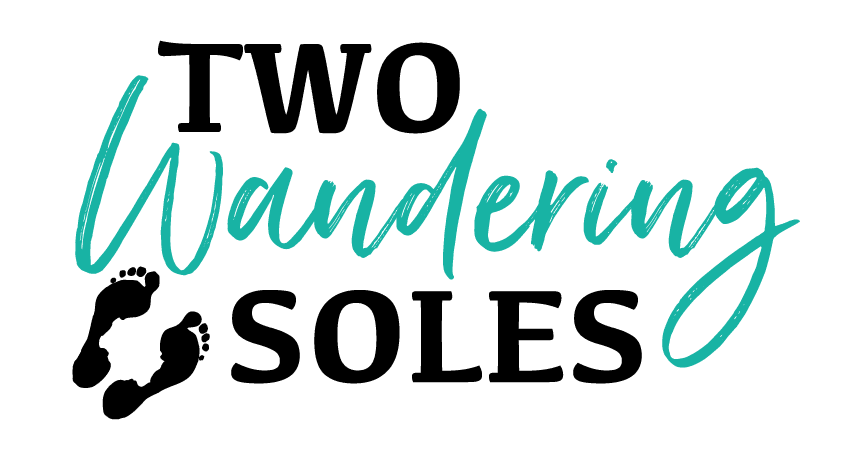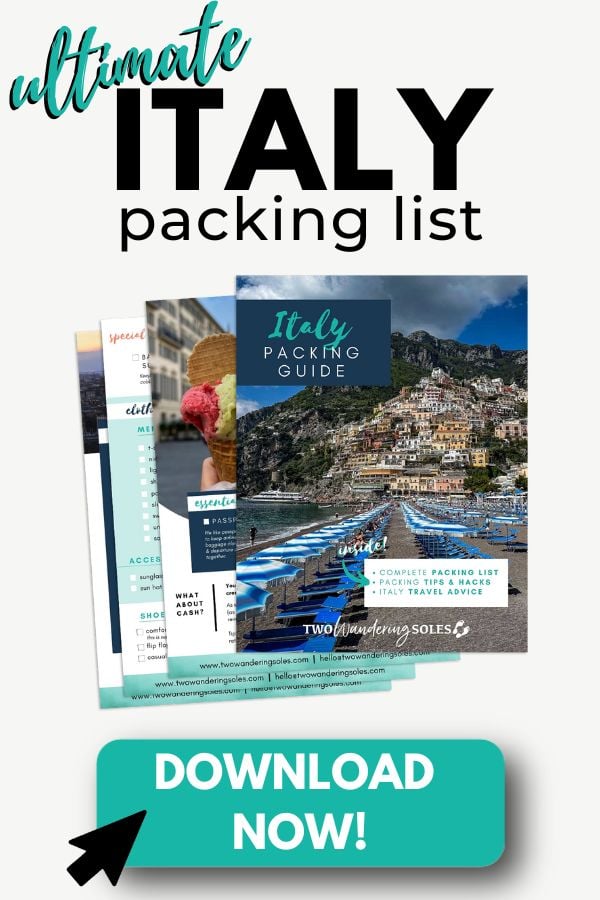This Florence travel guide covers everything you need to know—from the best neighborhoods to stay in and how to get around to safety tips and must-try restaurants. It’s loaded with insider tips to help you have an unforgettable trip!
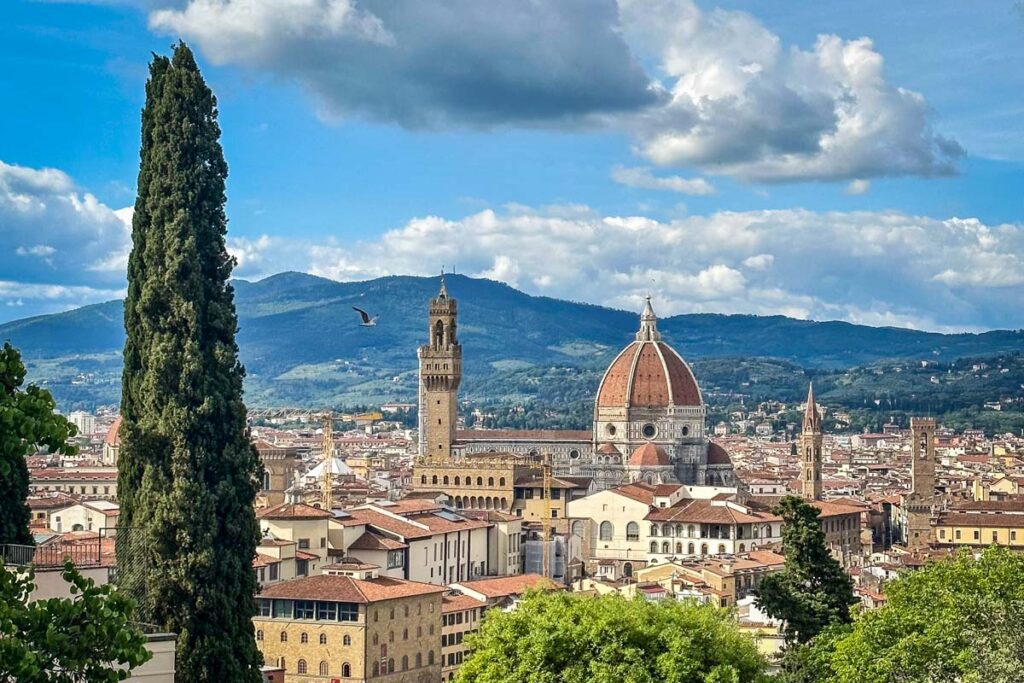
Florence is one of those cities that is so easy to fall for. I’ve visited three times now—spending months here collectively—and every time, I discover something new that makes me fall even more in love with it.
From world-famous Renaissance art to tucked-away wine bars and quiet piazzas where locals linger, Florence is a city that rewards both first-time visitors and seasoned travelers alike.
In this guide, I’m sharing everything I’ve learned over the years to help you plan your own unforgettable trip to Florence—whether you’re here for the history, the food, the views (or all of the above!).
Florence Travel Guide
- Best time to visit
- How to get to Florence
- How many days?
- Top things to do in Florence
- Perfect Florence itinerary
- Getting around Florence
- Florence Pass vs. Firenze Card
- Tips for visiting Florence
- Where to eat
- Where to stay
- Day trips from Florence
Best time to visit Florence
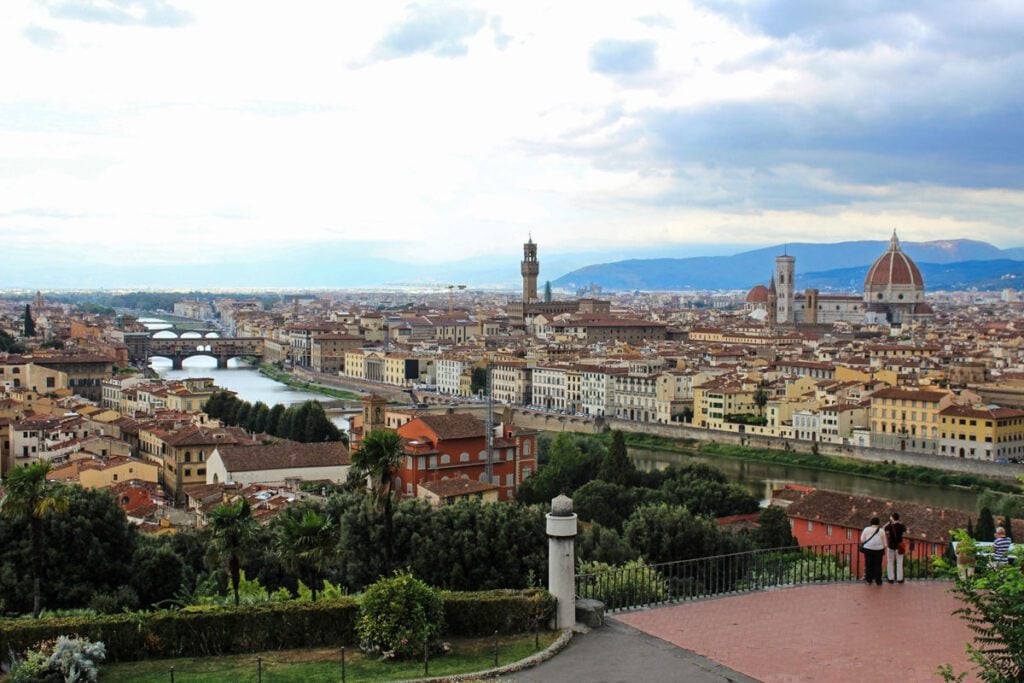
The best time to visit Florence is during the shoulder seasons from April to May and September to mid-October when the weather still feels like summer, but the prices are cheaper and crowds are more mellow.
The most popular time to visit Florence is June, July, and August, but note this is peak tourism season and you should expect high crowds and prices during this season. We recommend avoiding this season altogether, but if you’re not able to do that, adjust your expectations and plan everything well in advance.
You can absolutely visit Florence in the winter. You’ll have the benefit of the fewest crowds and cheapest prices, but do know the weather and overall atmosphere may impact your trip.
Keep in mind, Florence is a university town where a lot of American coeds go to study. During the school year (fall and spring semesters), you’re likely to run into tons of university students touring the city and surrounding areas.
→ Psst! Find out the best time to visit Italy based on seasonal weather patterns in each region and your personal travel style.
How to get to Florence
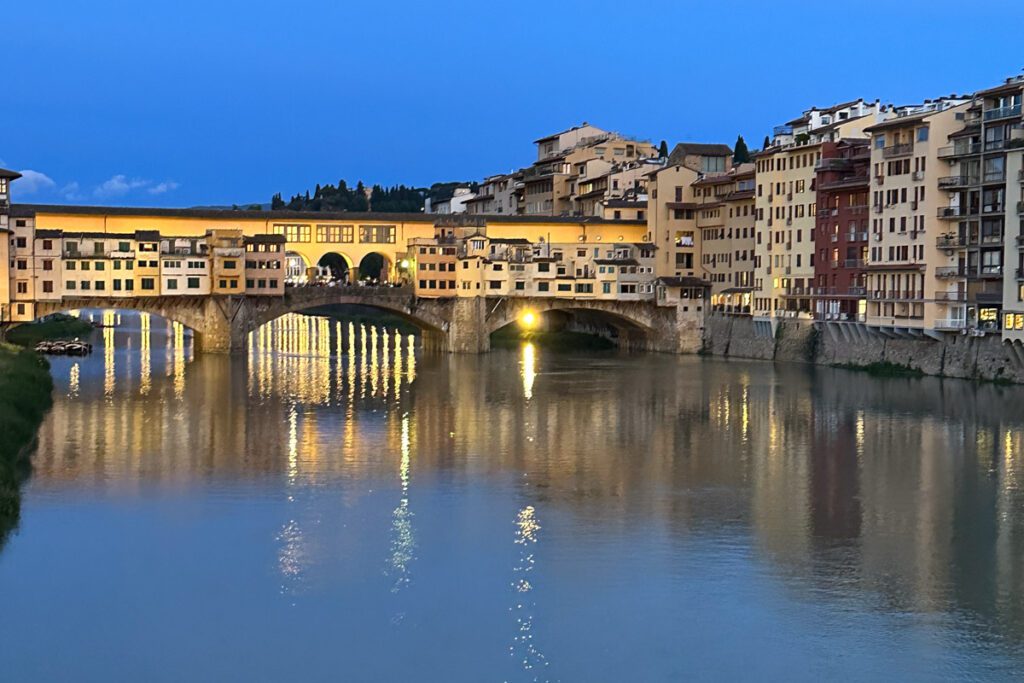
The best way to get to Florence from elsewhere in Italy, is by train. Here is a quick breakdown of the most popular routes. Book your train tickets via Trenitalia.
- From Rome: 1 hour, 45 minutes
- From Milan: 1 hour, 54 minutes
- From Venice: 2 hours 13 minutes
Insider Tip: You can use the Trenitalia app to book your train tickets up to immediately before boarding. Just be sure you enter the train station names in Italian. The main station in central Florence is Santa Maria Novella, listed as ‘Firenze S. M. Novella.’ Rome is ‘Roma – Termini,’ Milan is ‘Milano Centrale’ and Venice is ‘Venezia S. Lucia.’
We’ve covered all the details for traveling from Rome to Florence, plus helpful tips and FAQs about the journey.
If you are coming from outside the country, flying directly into the Florence International Airport (FLR) is an option.
Otherwise you can fly into the Pisa International Airport (PSA), which is 88.1 km (54.7 miles) west of Florence and just under an hour on the high speed train. Follow the directions our transportation guide for Florence to Pisa to find out how to travel between the two cities.
How to get to Florence city center from the airport

There is a tram that runs from the Florence Airport into the city center (drop offs near SMN train station). You can purchase tickets at the machines right on the platform. The tickets are just €1.50, whereas a taxi ride into the city center will cost you about €25, give or take.
How many days in Florence is enough?
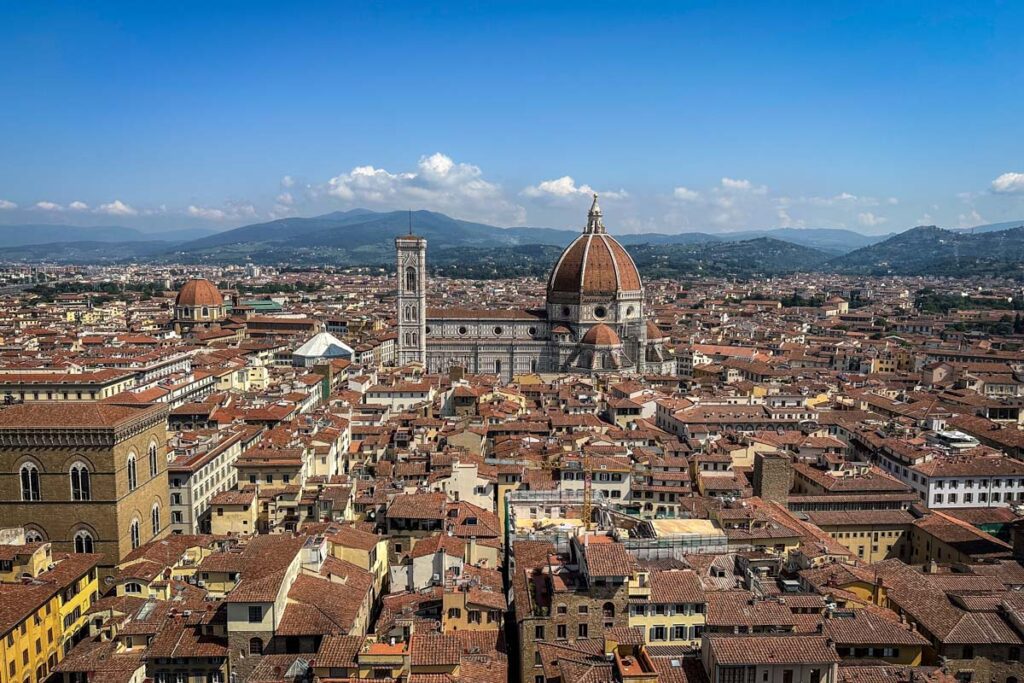
One organized day can be fulfilling for a visit, but I recommend three days as the minimum time to spend in Florence.
However, more time is always better in any destination, so here is what that could look like depending on how much time you have:
- 2 days: Florence Cathedral and Duomo Complex, Accademia Gallery, Uffizi Gallery, Palazzo Vecchio, sunset at Piazzale Michelangelo, and Mercato Centrale.
- 3 days: Days 1 & 2 plus Medici Chapels, Boboli Gardens, food tour, aperitivo on a rooftop bar, and more opportunities for shopping and dining.
- 4 days: Add a cooking class and wine tasting.
- 5+ days: Time for a day trip(s) around Tuscany
Things to do in Florence
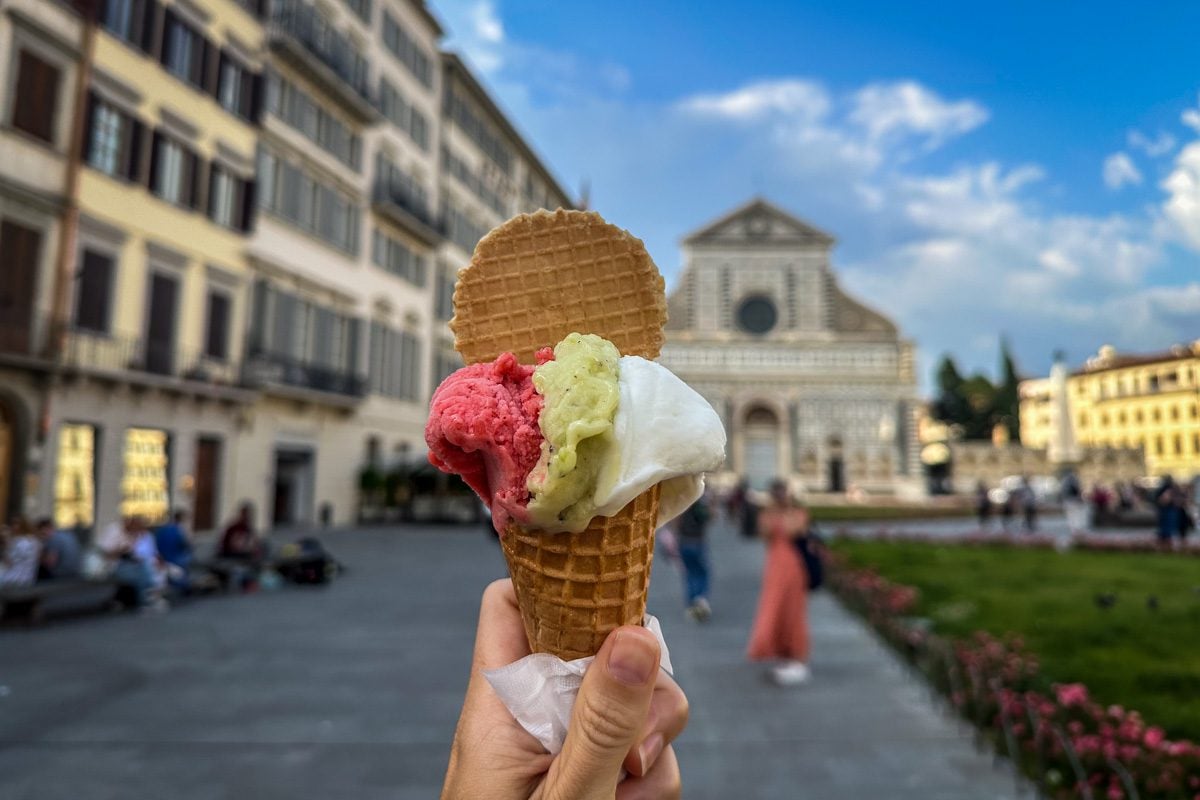
If you’re looking for the very best things to do in Florence, here are our top recommendations:
- Walk along the Ponte Vecchio
- Gaze at Il Duomo from every angle
- Climb Giotto’s Bell Tower
- Watch the sunset from Piazzale Michelangelo
- Marvel at The David
- Go on a food tour
- Peruse the Galleria de Uffizi
We have an entire article dedicated to the best things to do in Florence where we share details and tips for first-time visitors.
Perfect Florence itinerary
There are so many things to do in Florence for every type of traveler. But with so much to do, it can be a bit overwhelming trying to plan your time.
We decided to give you a little head start and created the perfect Florence itinerary for your first time in the city.
Getting around Florence
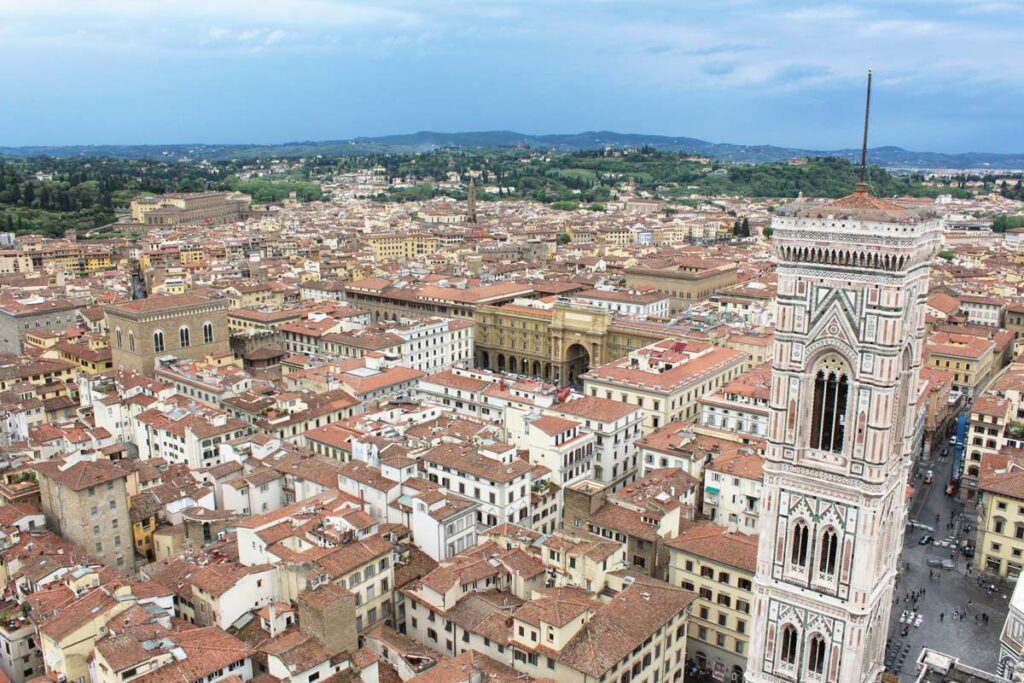
Florence is a small city. In fact, walking is the best way to get around since you can get from one side of the city to the other in about 30-minutes.
However, the city has excellent public bus routes you can use. Purchase tickets before you board the bus at shops around town with an “Autolinee Toscane” sticker in the window, at the counter at the Santa Maria Novella train station, or using the Tabnet App.
You can purchase tickets as a single-ride 90-minute ticket for €1-2 or multiple ride tickets for around €14 ($15.43 USD).
There are two trams that run through Florence, T1 and T2. They use the same tickets as the bus and you can purchase them at the tram station before you board.
- T1: East to west, Scandicci to the Santa Maria Novella train station, and recently extends to the Careggi teaching hospital.
- T2: North to south, Santa Maria Novella Train Station to the airport.
Taxis are a comfortable, but expensive way to get across town. You can find them at taxi stands in the main tourist areas. Uber is extremely limited, if available at all in Florence.
The Florence Pass vs. Firenze Card: Which is better and are they worth it?
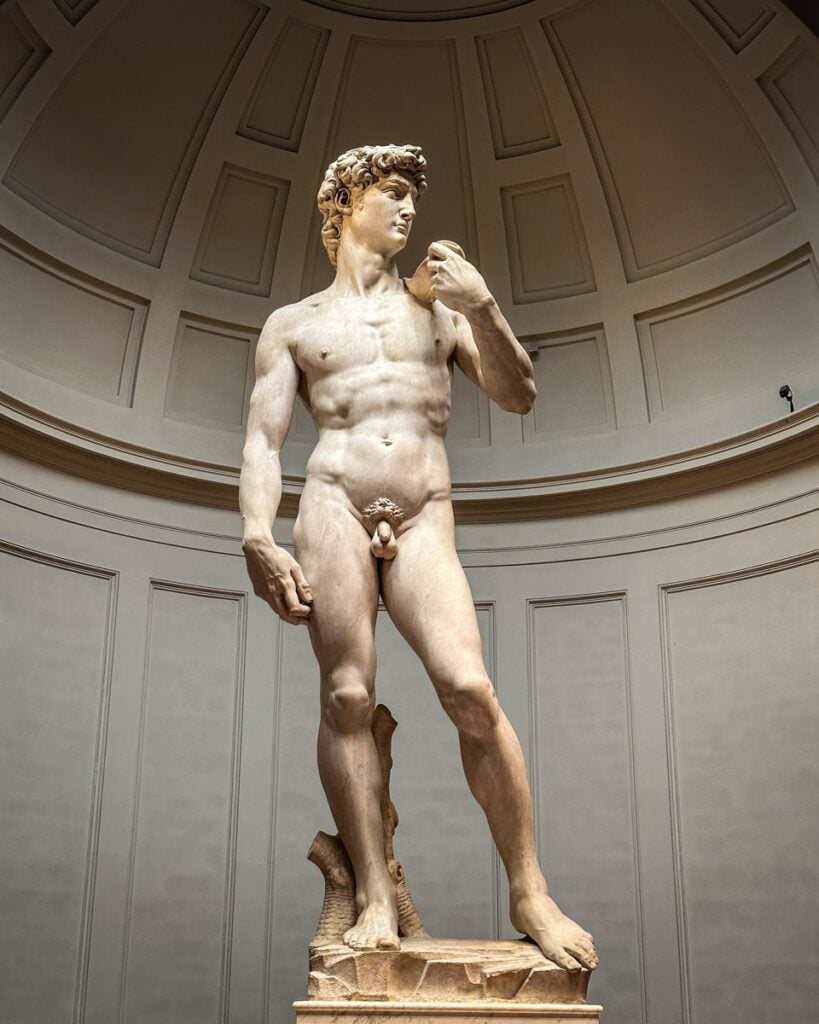
During your trip, you’re going to visit a ton of attractions, many of which require separate entry tickets.
To save time and money, it’s worth looking into the city’s two main passes, the Florence Pass or the Firenze Card. With both of these passes, you pay a flat fee and get all your tickets in one swoop.
They each come with pros, cons, and their own list of attractions, so I’ve broken them down below so you can decide which, if any, is the best option for your trip.
The Florence Pass
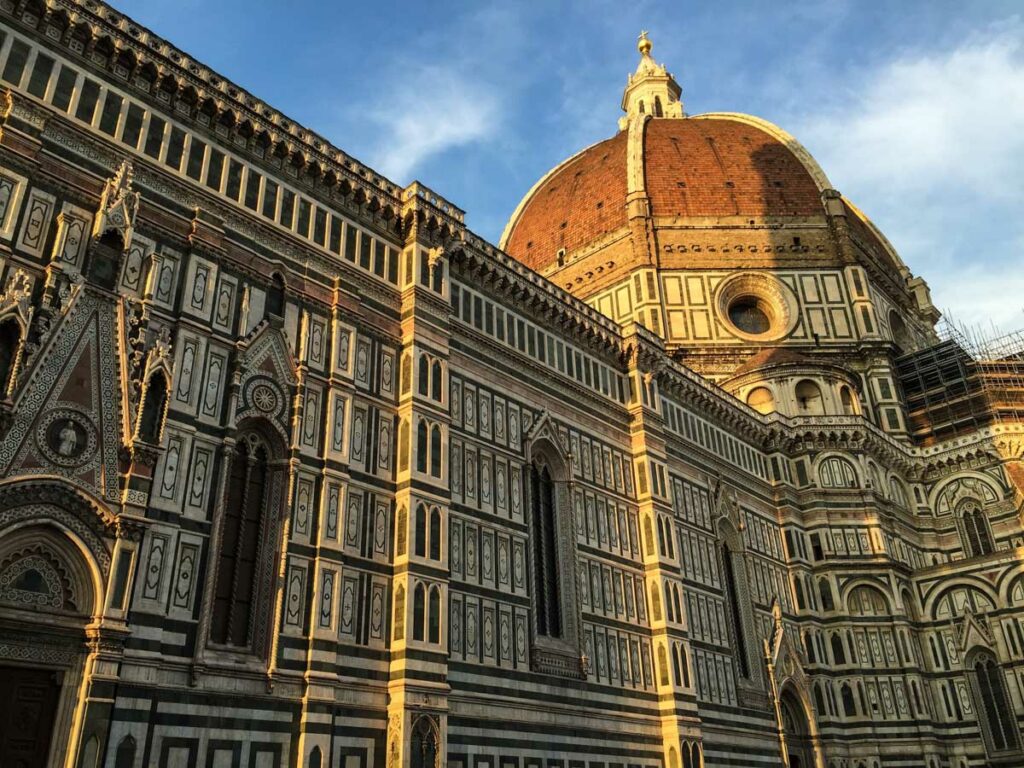
The Florence Pass gets you into a handful of the most popular attractions in Florence.
Cost: €115 ($126.92 USD)
Includes: Priority access to the Uffizi Museum, Accademia Gallery, Brunelleschi’s Dome (Il Duomo). Plus entry tickets to Giotto’s Bell Tower, Baptistery, Opera del Duomo Museum, and Santa Reparata.
Is it worth it? All the sites included with the Florence Pass are in this list of things to do in Florence. Consider the cost of what you do want to see and compare to the cost of the pass.
It’s also worth comparing the cost of the Brunelleschi Pass and Uffizi + Accademia Museum Pass as it’s the same bundle.
Pros
- All tickets are digital.
- Travel at your own pace by selecting your own visit dates/times for each site.
- Saves a ton of money if you plan on visiting the majority of included sites.
- Ideal for longer visits in the city since you can spread out your reservation dates.
- 10% discount on other attractions.
Cons
- Only includes the main attractions.
Firenze Card
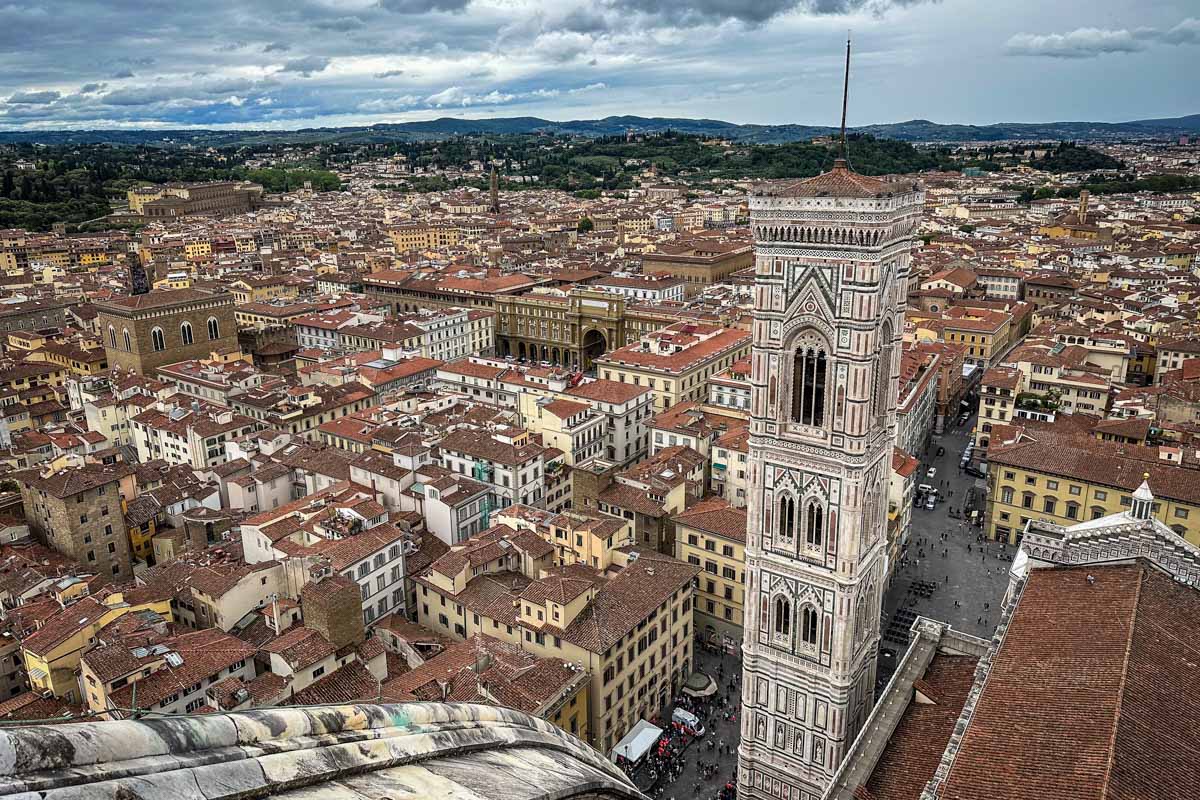
The Firenze Card is the official museum pass of Florence where you can spend a fixed rate and get access to dozens of museums around the city.
Cost: €85 ($93.72 USD)
Includes: Tickets to more than 60 museums, palaces, and cultural sites. See full list
Is it worth it? Overall, whether or not the Firenze Card is right for you requires you to crunch some numbers and compare the prices/capability of visiting all the museums you want.
It may not be right for you if you’re only in Florence for a day or two and plan on only hitting the main museums, however you may find it saves you money if you’re traveling with a family, in Florence for at least 3 days, or visiting many smaller museums.
Pros
- Can be worth it if you want to visit numerous museums and palaces since many smaller museums are included in the cost.
- Card is digital or physical.
- Children up to 18 get in free with the cardholder.
Cons
- It doesn’t include priority access, so you’ll need to arrange reservations over the phone for the big galleries like Uffizi and Accademia.
- It is only valid for 72 hours. However, you can add an additional 48 hours with FirenzeRestart.
Alternative: Uffizi + Accademia Museum Pass
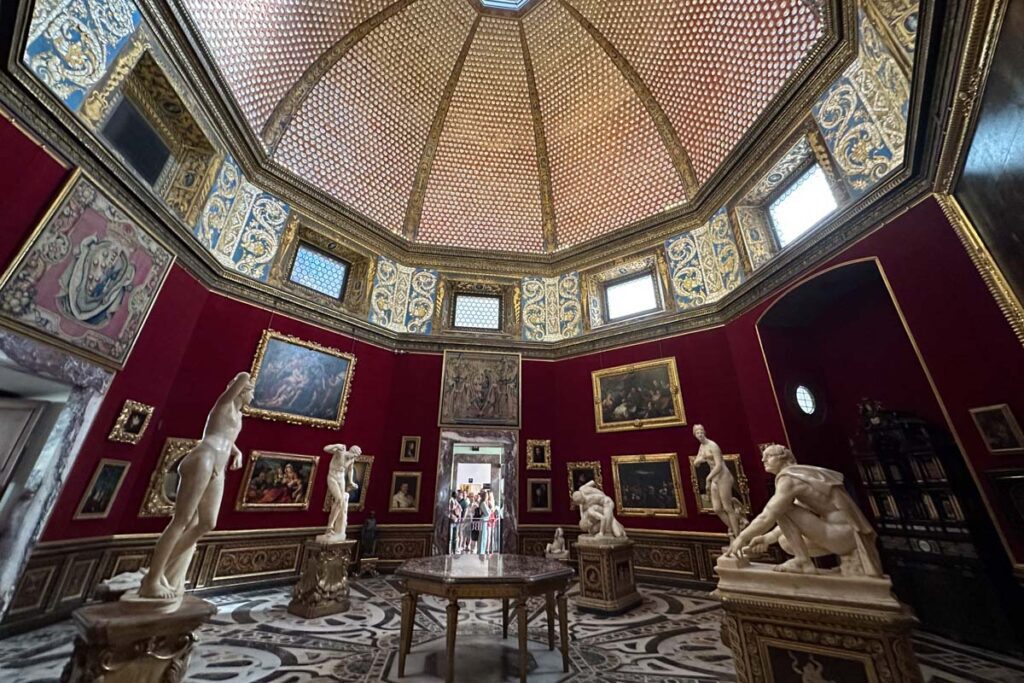
This pass only includes the two biggest museums in Florence, Uffizi and Accademia.
For each place you can select your own date and time slot for priority entrance. Plus, you’ll save a few euros buying them both together.
This is great as a standalone pass if you’re only in Florence for a short time and are okay with visiting both galleries in one day. Otherwise, consider the other two passes as they already include entry to both of these places and offer more flexibility.
- Cost: €59 ($65.05 USD)
- Includes: Priority access to the Uffizi Gallery and Accademia Museum.
Tips for visiting Florence
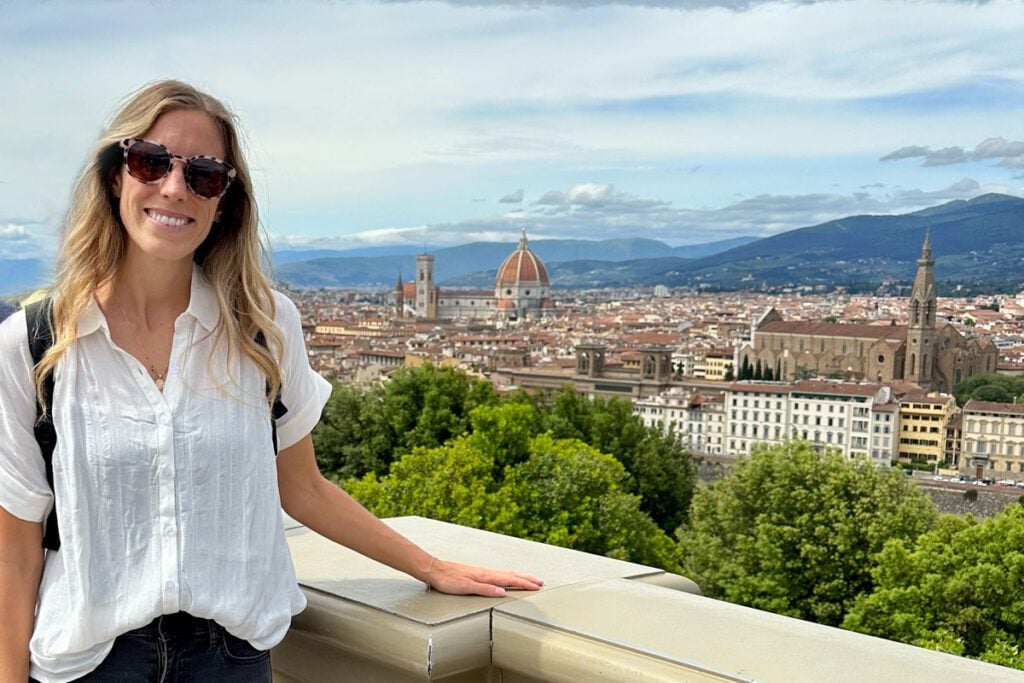
Use these tips for visiting Florence when planning your trip and after you arrive for a more seamless visit.
- Florence is known locally as “Firenze”. Something to note when purchasing tickets or getting directions.
- Purchase entry tickets in advance. If you’re budget allows, grab a skip the line while you’re at it. The wait to get in most major sites can take hours otherwise.
- Know about scheduled closures.
- Il duomo, the Florence Cathedral, is closed on Sundays for worship and you will not be able to enter the main floor. The dome does not open until 12:45 p.m. on Sundays.
- All state-run museums in Florence are closed on Mondays, including the Galleria Uffizi and the Galleria dell’Accademia
- The San Lorenzo Market and Mercato Centrale are closed Mondays
- The Medici Chapels are closed on Tuesday
- On the first Tuesday of each month, the Opera del Duomo Museum is closed
- The Palazzo Vecchio closes early on Thursdays, at 2 p.m. instead of 7 p.m.
- Start your day early to beat the crowds.
- Cover up when visiting churches. No bare shoulders or midriffs, bottoms should reach past your knees. These rules aren’t heavily enforced, but it is a good thing to keep in mind and be respectful of the religious institutions.
- Currency exchange will charge a conversion fee. It’s best to get cash from ATMs and always decline the conversion rate (this means your bank will give you the best conversion rate for the day of the transaction).
- Pick-pocketing is common in Italy. Leave your valuables at home and always keep track of your belongings. Be mindful of your bag if wearing a backpack and don’t leave your purse hanging on the side of your chair while dining on the sidewalk.
- Arrive with a plan and accept you won’t see everything. Nearly everything requires a ticket to get in, so to get the most out of your time in Florence you need to be strategic with how and where you spend your time. When planning, make a list of absolute must-sees.
Where to eat in Florence
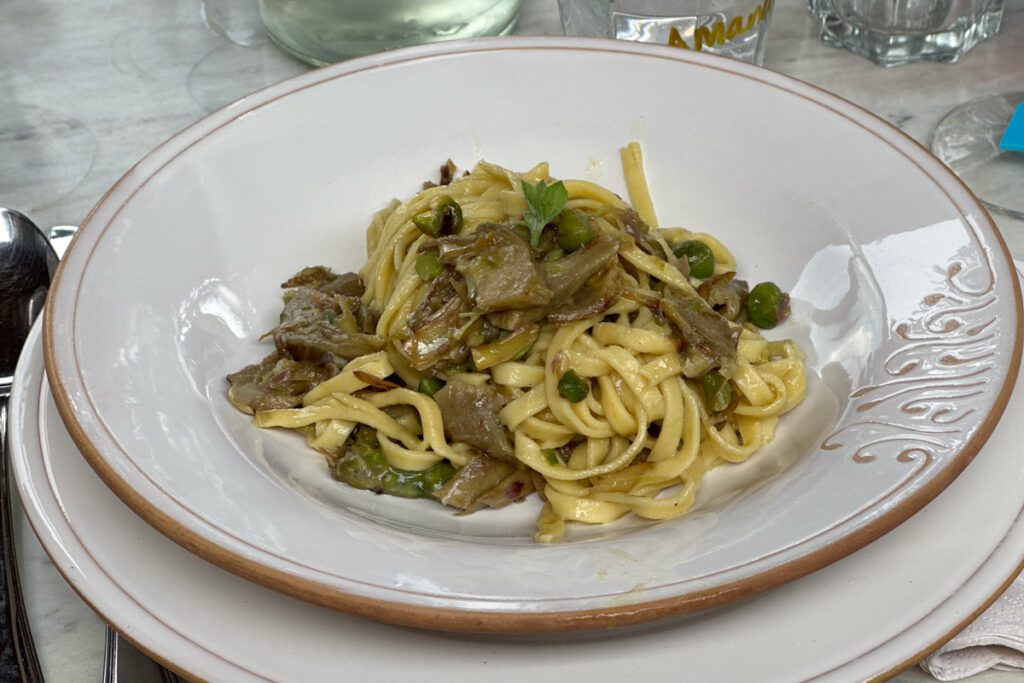
From gourmet Tuscan cuisine to pizza by the slice, there are endless places to dine in the Tuscan capital. Here are some acclaimed spots to get you started:
Restaurants
- La Gistoria: a delightful fusion of traditional Tuscan cuisine and contemporary flavors.
- Trattoria Zà Zà: Authentic Tuscan food with generous portions.
- Osteria dell’Enoteca: Upscale Tuscan cuisine with a rotating, seasonal menu.
- Il Teatro: Coal-fired pizza and a quality menu of local fare.
- Trattoria Mario: 1953 trattoria with regional wine, and Tuscan soup, plates, and pasta.
- La Ménagère: Trendy cafe that serves elegantly prepared Tuscan cuisine.
- Il Santo Bevitore: Locally-frequented spot with artistic dishes in an upscale, ambient setting.
- Irene: Italian cuisine and regional ingredients in a chic restaurant.
- Ristorante Quinoa: An entirely gluten-free restaurant in Italy?! And with good food at that!
Cafes & casual dining
- Rooster Cafe: The best place to find an American-style breakfast with all your favorites.
- Le Vespe Cafè: Canadian-style breakfast and lunch with a healthy twist.
- Mercato Centrale: Gourmet food hall with International and authentic Italian food.
- All’Antico Vinaio: This sandwich shop is a popular stop for lunch.
- Rosalia Salad Gourmet: If you’re feeling the carb overload, this is a great spot to make your own salad bowl.
- RivaReno Gelato: High-quality and authentic gelato using classic and creative flavors.
- Cantina del Gelato: Artigianale gelato with sweet crepes, smoothies, and acai bowls.
Bars for aperitivo
- Bulli & Balene: Small bar with a la carte bites and quality spritz.
- Locale: A 1500s palazzo with creative and highly-acclaimed cocktails.
- B-Roof: This rooftop bar has a superb view over Florence with elevated Tuscan food and cocktails.
- Caffe Gilli: Established over 270 years ago, this is the oldest cafe in Florence and supposedly where the negroni was invented
Rooftop bars
- View on ART: THE best rooftop view in Florence with up close views of the Duomo and Giotto’s Bell Tower.
- Divina Terrazza: Up close views of the Palazzo Vecchio and Basilica of Santa Maria del Fiore from the top of Grand Hotel Cavour.
- Angel Roofbar & Dining: Charming multi-level rooftop with views of the Palazzo Vecchio and a southern Mediterranean menu.
- B-Roof: Large, garden-like terrace at the top of the Grand Hotel Baglioni.
- SE·STO on Arno: Upscale spot with views of the Duomo, Palazzo Vecchio, Arno River, and Ponte Vecchio.
Where to stay in Florence
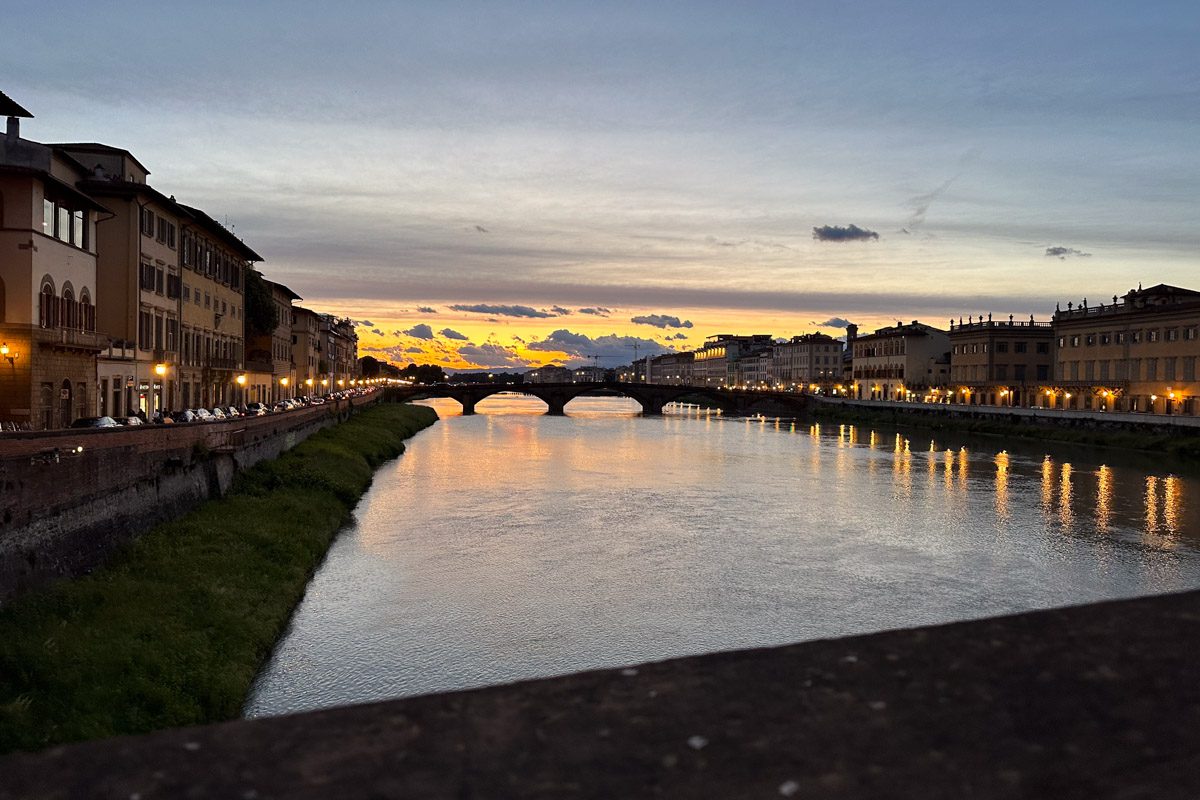
Florence is not a huge city, so all of the neighborhoods are just a short walk away from all the hubs. Each has its own flare and draw, so I’ve broken them down below:
- Duomo (City Center): The modern and cosmopolitan center of Florence with all the top attractions, hip cafe culture, and shopping.
- Santa Maria Novella: Riverside neighborhood with budget accommodation options, boutique shopping, historic sites, and fantastic drinks/dining.
- San Marco: Just northeast of the city center is a nice escape from crowds in an artistic and academic neighborhood.
- San Lorenzo: A stone’s throw north from the city center is an unpolished neighborhood with the best markets and traditional Tuscan food.
- Santa Croce: This is the hub of Florence’s food and drink culture with limited accommodation, but worth the hunt to stay in this cool area.
- San Frediano/Santo Spirito: Two lively neighborhoods on the other side of the Arno River with a genuine Florence feel. Find unique, vintage, and artisan goods as well as craft food and drinks.
Budget hostel: Hostel Archi Rossi
Situated in the historic city center, this hostel is close to all the main attractions in the city, including the main train station. There are private and shared rooms, an outdoor garden patio, washer and dryer facilities, free coffee, cafeteria, and clean rooms.
Mid-range budget option: Bright and spacious apartment
This cozy one bedroom apartment offers all the comforts of home, including wifi and A/C. Conveniently situated in the heart of historical Florence, you’ll be within walking distance of all the major attractions.
Mid-range budget option: Unique apartment at Mercato Centrale
A charming and modern 2-bedroom apartment overlooking Mercato Centrale. The beds are extra comfy, the kitchen is fully-equipped, and it’s close to all the action in the city center.
Splurge hotel: Hotel La Gemma
In the heart of the city center, this unique and contemporary boutique hotel has all the comforts and amenities needed for a memorable experience. The 5 star accommodation features a terrace, restaurant and lounge, plus air conditioned rooms in a stunningly designed space.
Splurge hotel: Grand Hotel Baglioni
This luxurious hotel is conveniently located just across the street from the train station within the history center. Elegant rooms, a breakfast buffet, rooftop garden, and free Wifi are steps away from all the best restaurants and attractions of Florence.
Best day trips from Florence

Being in the heart of Tuscany, Florence is well-located to use as a base to explore more of the greater Tuscany region. Think wine, food and epic sunsets on rolling hills and cute little hill-top towns.
There are plenty of opportunities for day-trips (or weekend getaways!) near Florence. We put together an entire guide to all of the very best day trips from Florence (packed with all sorts of tips!).
Plan your trip to Italy
We have TONS of resources on travel in Italy and destinations throughout the country. Check out our Ultimate Italy Travel Guide for answers to all your questions, or read some of our favorite articles below!
- Not sure when to go? This guide to the best time to visit Italy will help you avoid crowds and make the most of your trip.
- Check out our guide to the best things to do in Tuscany—full of food, wine, and charming hill towns.
- First time visiting? Here are the best things to do in Rome so you don’t miss the highlights.
- Our 3-day Rome itinerary covers all the must-sees (and a few local secrets!).
- Our Cinque Terre National Park guide has everything you need to plan your visit.
- Don’t miss our favorite things to do in Positano—from iconic views to hidden gems.
Perfect Italy itinerary
Want to save hours of time planning?
If you don’t have a ton of time to spend planning your Italy itinerary (or you just don’t find travel planning fun), we’ve got something you might be interested in…
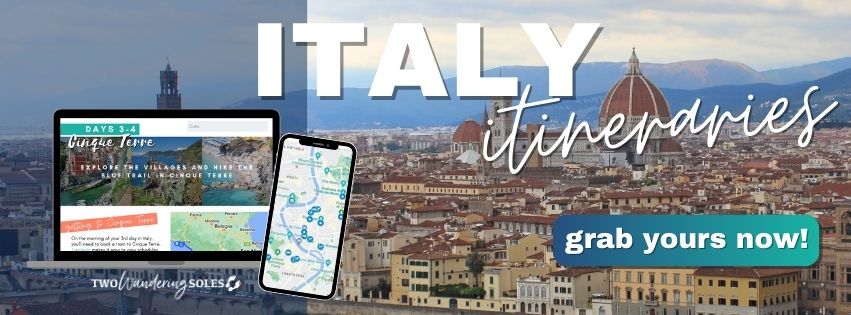
We created the ultimate done-for-you Italy itinerary that hits the top destinations for first time visitors. Our itinerary is spread out over 10 days and includes the highlights of Rome, Cinque Terre, Florence and Venice.
In fact, we have both a 10-day classic itinerary as well as a one-week Amalfi Coast itinerary that can be easily combined into one epic trip!
Don’t miss your chance to grab your Italy packing list!
In this free Italy packing list PDF download, we’ve provided packing checklists for everything from clothing and toiletries (for both women and men!) to what shoes to pack and extra medicines you may want to have on-hand just in case.
Plus, we’re sharing tons of packing hacks and tips for traveling in Italy that you won’t find anywhere else!
Save this article on Pinterest for later!
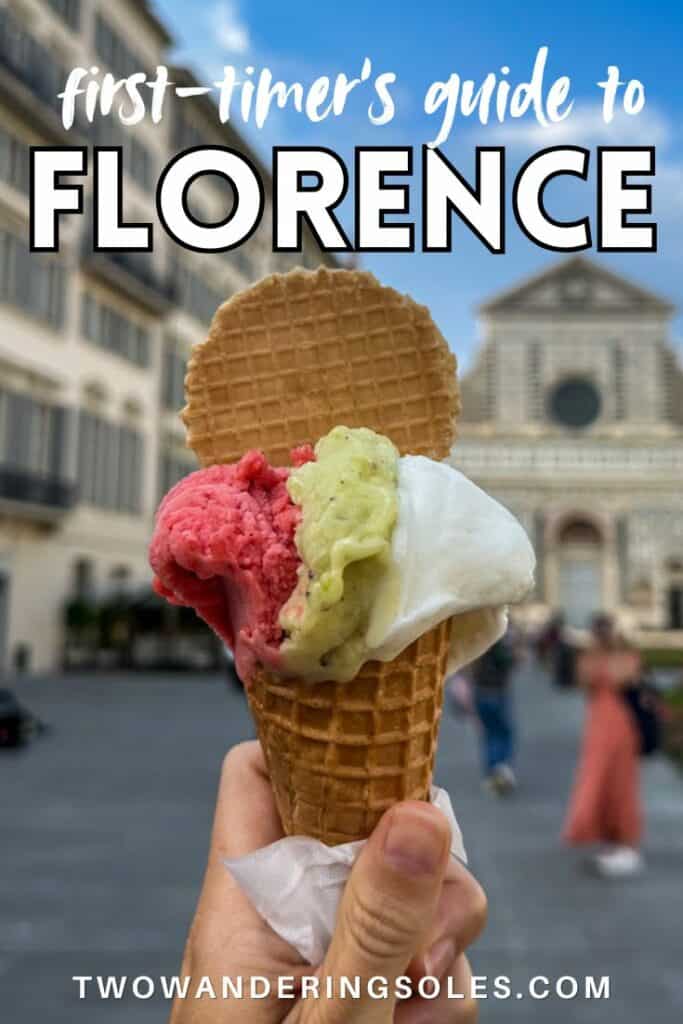
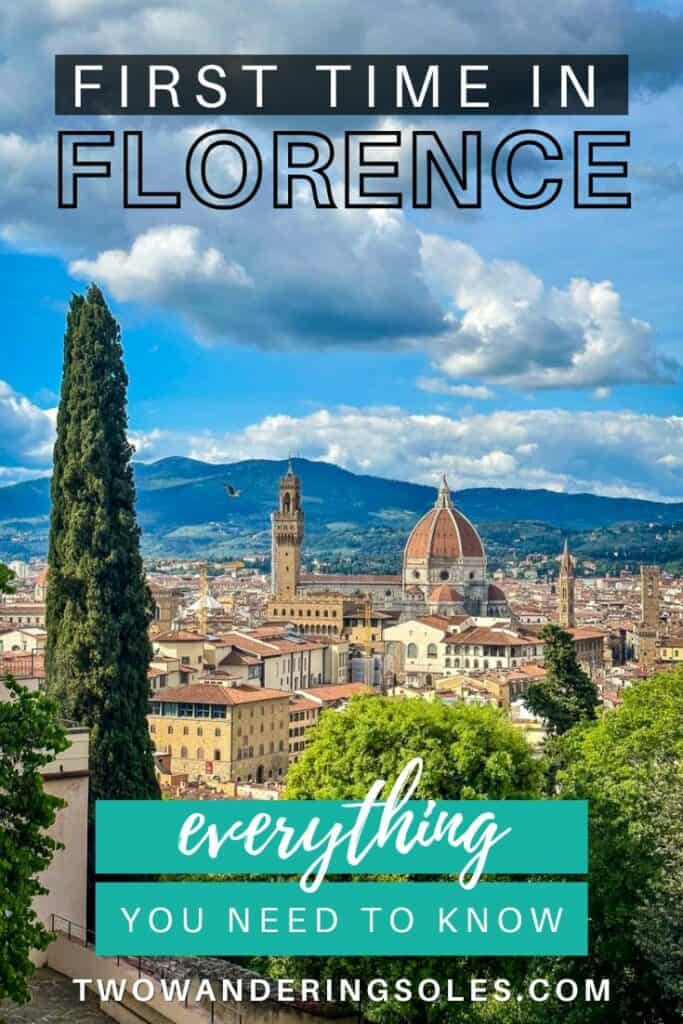
We want to hear from you!
Was this Florence travel guide helpful? Are you planning a trip to Florence, Italy and still have questions? Leave your comment below and we’ll do our best to get back to you with the answers you’re looking for!
